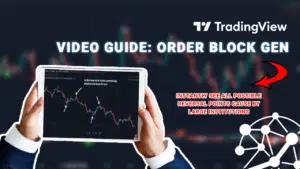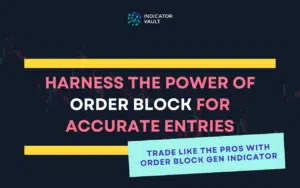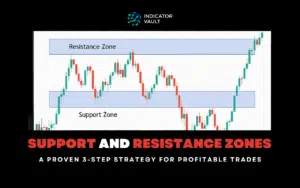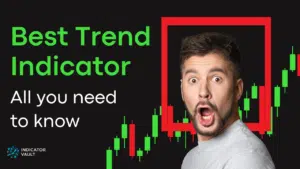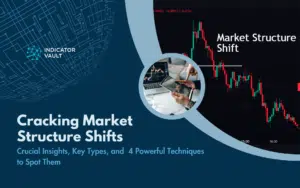Despite trendlines analysis’ widespread nature, only a few technical analysts really make a killing with them. Explore this concise article today to be one in no time.
Table of Contents
1. Introduction
Trendlines have always been a chief cornerstone in technical trading. No true analyst is oblivious to its concepts, presence, and methodology. However, only a modest number boast of its efficiency in trading.
This article explores trendline analysis and its basics with keynotes to consider when employing them. As a perk, readers will get an exclusive trading tool derived from its principles to enhance their results.
2. Trendline Fundamentals: Definition, Types, & Significance
Trendlines are one of the most popular, debated, and nearly “over-utilized” discoveries of technical analysis. They are lines connecting sensitive points in price charts for understanding the underlying trend (bullish, bearish, sideways) or support & resistance areas.
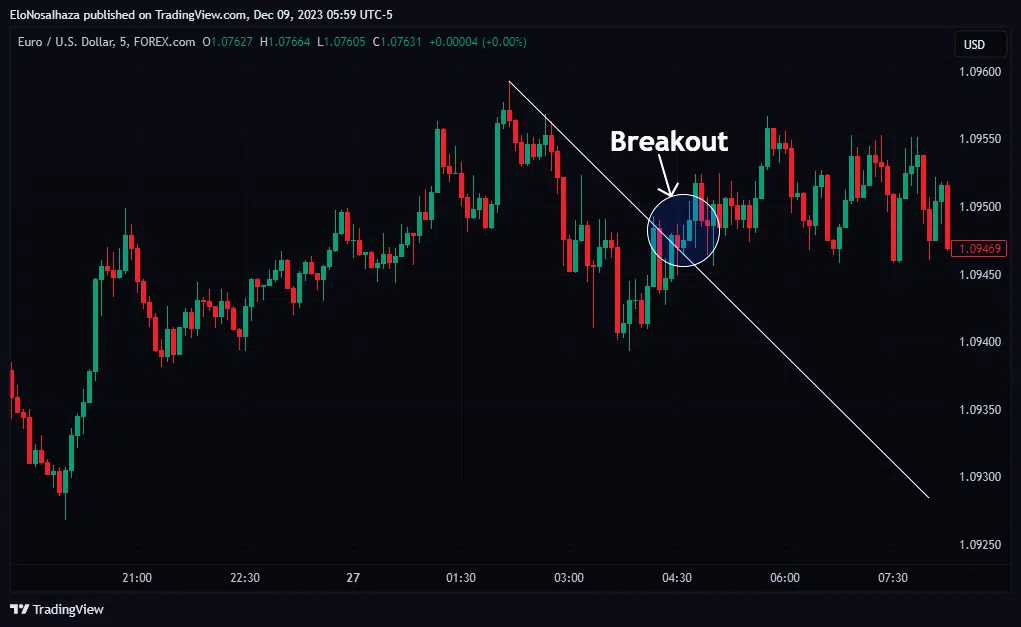
Hence, trendline analysis entails drawing these straight lines in the markets (from Forex to commodities and indices) for potential forecasts. The market direction helps technical analysts stay informed on the current conditions to make the best decisions.
Below are the types of trendlines based on how they can appear:
2.1 Uptrend (Bullish Trend) Line
True to its name, an uptrend line is an ascending line highlighting a bullish market. It connects the higher highs of candlesticks continuously until the trend switches.
The swing lows are also typically ascending when no significant market-moving event transpires. Hence, many traders favor having them below these lows like a support line.
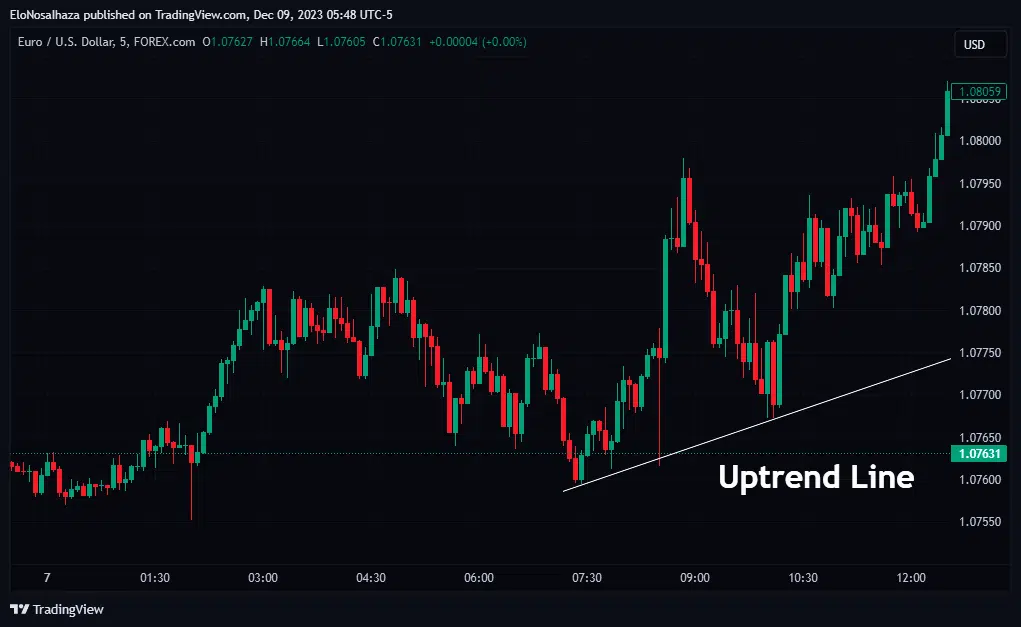
There are no rigid rules about drawing uptrend lines.
Some price analysts prefer the lines to lean on the opening or closing price of the rising candle bars. Others continually adjust them after every new price data release.
2.2 Downtrend (Bearish Trend) Lines
Conversely, downtrend lines descend with the price, indicating bearishness. The slant drawings connect falling swing highs as long as the declining move lasts (like a form of resistance).
In many cases, the lows also descend uniformly throughout the trend period.
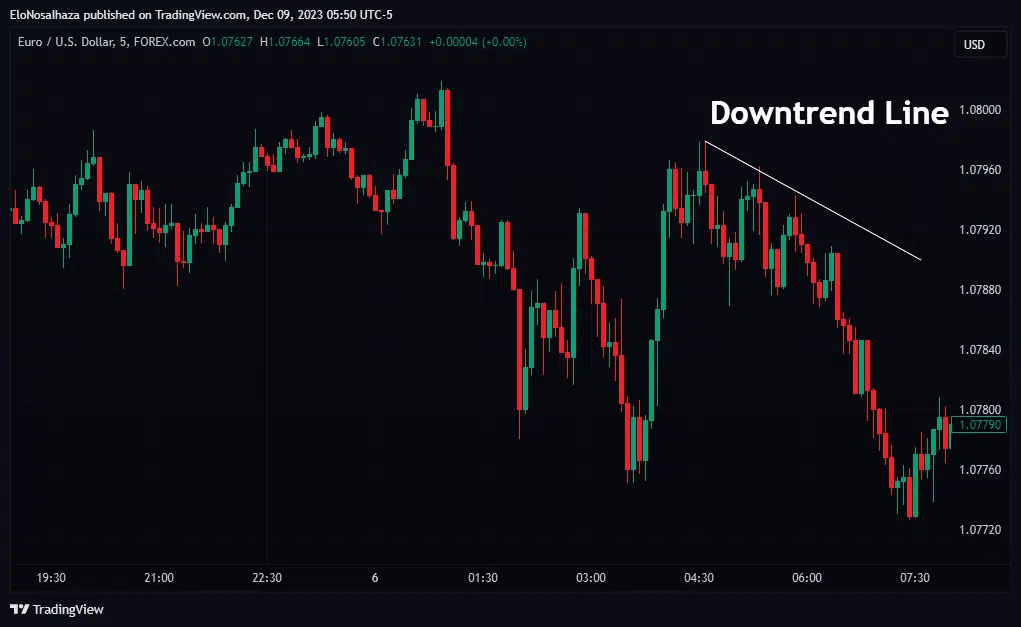
Like bullish trendlines, technical traders can ignore the wicks to draw bearish trendlines that touch candlesticks’ bodies, and no one questions such decisions, especially when prices keep respecting them.
2.3 Horizontal (Support & Resistance) Trendlines
Horizontal lines in the chart have proven significant in this technical analysis field. They mark levels where prices are supposed to find support (below) or experience resistance (above) against breaking beyond them.
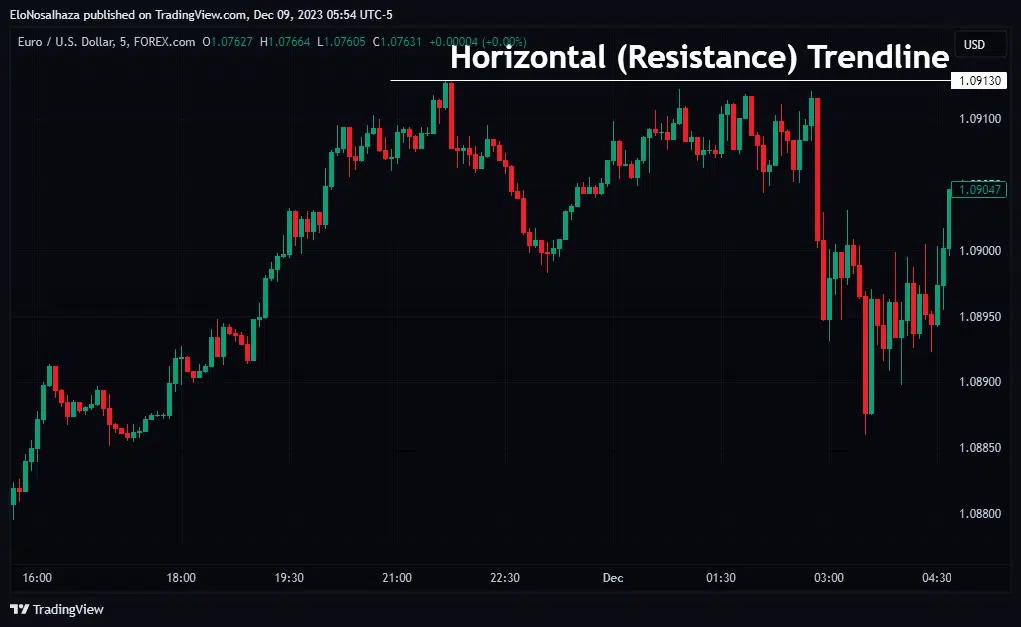
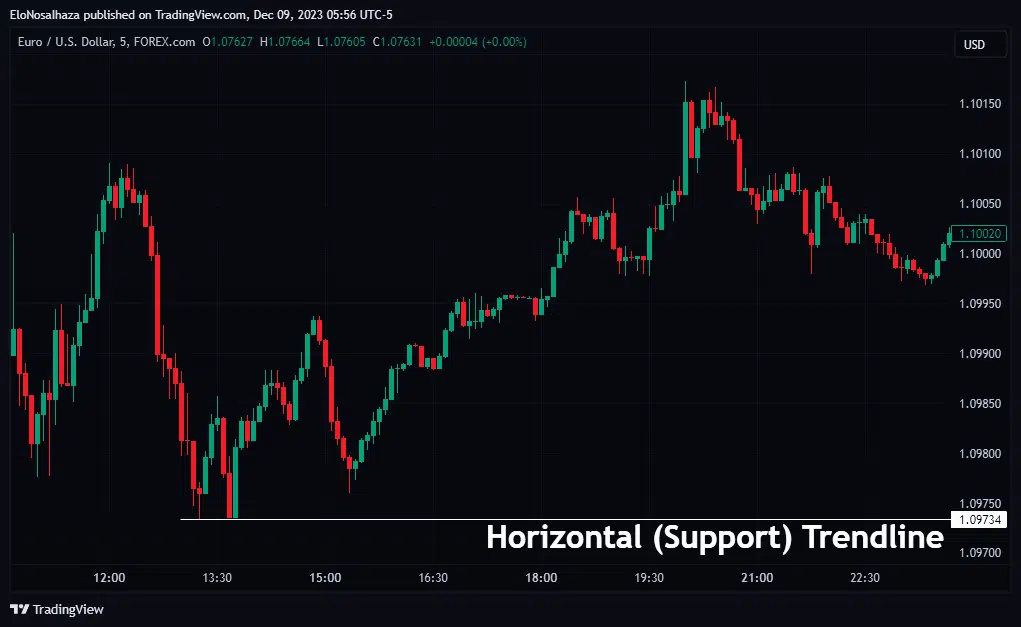
Traders identify them by observing chart levels that have prevented a price cross with past swing highs and lows. Hence, future price movement toward such areas may cause an anticipated reversal.
Prior experience with support and resistance levels is vital to draw and leverage horizontal trendlines.
3. Key Factors to Consider in Trendline Analysis
Trendline analysis seems effortless on paper.
Drawing the lines will barely take a minute once experienced with the trading platform. Then, forecasting future moves should already be direct from the highlighted levels.
However, extensive practice in live trading conditions tells a different story.
Every interested trader must understand the several caveats that come with this strategy. Below are a few helpful tips:
3.1 Breakouts at Any Time
The primary purpose of trendlines is to anticipate levels the market price will likely respect (turn away from) with high accuracy. Any bullish move should halt and reverse at a downtrend line, and bearish ones should switch directions at the uptrend lines.
That said, breakouts can happen at any point. It signifies potential trend reversals, which can get anyone on the wrong side of the market.

The pros always remember this during analysis and take essential risk management steps to avert worst-case scenarios.
3.2 Better Application With Other Parameters
Assume a currency trader closely monitors the EURUSD price respecting an uptrend line in the London session of the month’s first Friday. It would be more shrewd to wait for the NFP release in the NY session before taking any day trading opportunity.
Such high-impact releases typically distort the prices of Forex majors in surprising ways.
Similarly, a purely technical analyst may insist on a Moving Average cross before taking a trading signal trendlines offer when prices hit them.
Combining trendline analysis with one or more analytical methods raises the odds of being successful.
3.3 Tight Stop-Loss Levels
It’s common for trendline analysts to place stop-loss orders just below or above trendlines in expectation of solid support or resistance.
However, prices aren’t always perfect and can just move beyond the levels before reversing. They could trigger one’s stop-loss order for what could have been a profitable opportunity.
Hence, giving trades more room to roam is most encouraged. Reduce the lot size or number of trades if you can’t bear the potential risk.
3.4 Short- and Long-Term Perspectives
Trends appear in every timeframe. Thus, traders can always have short- and long-term trendlines to work within.
A seemingly perplexing breakout in an M1 chart may be moving to respect an M5 trendline. Similarly, consolidations on an M15 chart may keep riding a trendline on lower timeframes.
Every trendline analyst must understand this and implement multi-time studies for better results.
3.5 Continuous Adjustment With New Price Data
During market hours, prices keep moving until a trading day’s end.
Any trendline drawn during the period needs continuous adjustment based on the new price data available. Therefore, traders must always stay active to make the most of this analysis.
The best-case scenario is that the price continues to respect the lines for as long as possible.
4. Raising the Bar With The Logic Trendline Indicator for TradingView
No matter how simple or daunting trendline analysis appears, veterans and newbies will always need assistance for the most profitable outcomes.
The most established choice is the Logic Trendline Indicator by Indicator Vault. It is a TradingView tool that reveals respectable trendlines in the charts for improved decision-making.
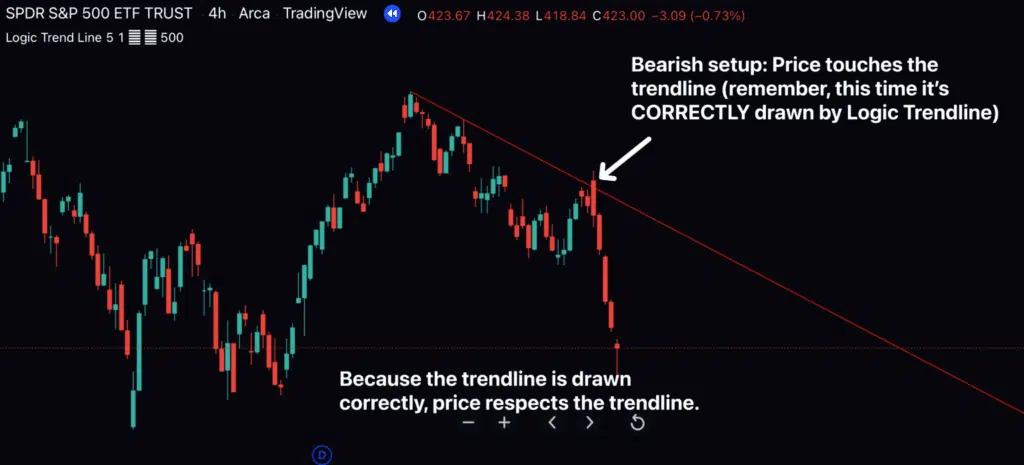
Once it draws the line, below are the benefits lucky users never miss:
- Understanding of the strongest support or resistance levels
- First-hand knowledge of potential breakouts and reversals
- Ability to trade in any preferred timeframe
- Quickest awareness of the next most favorable opportunity, thanks to the timely alerts
Click here to confirm these and many more benefits for the fastest equity growth.
5. Summary
Trendline analysis, one of the most common strategies in technical trading, entails using straight lines for price forecasts. Curious folks should learn that breakouts can always occur, and the lines work best with other parameters, among several conditions.
However, the Logic Trendline Indicator makes the process stress-free yet highly rewarding.
Feedback, from studies to results, is most welcome in the engaging Comment Section. Please also share this article with other aspiring traders to increase awareness of this technical approach.



